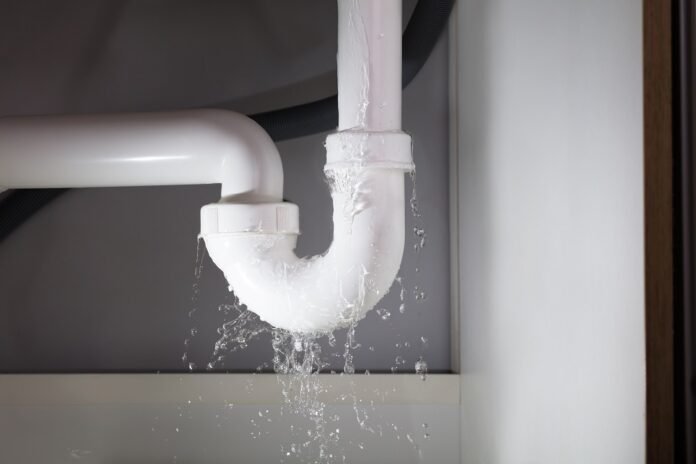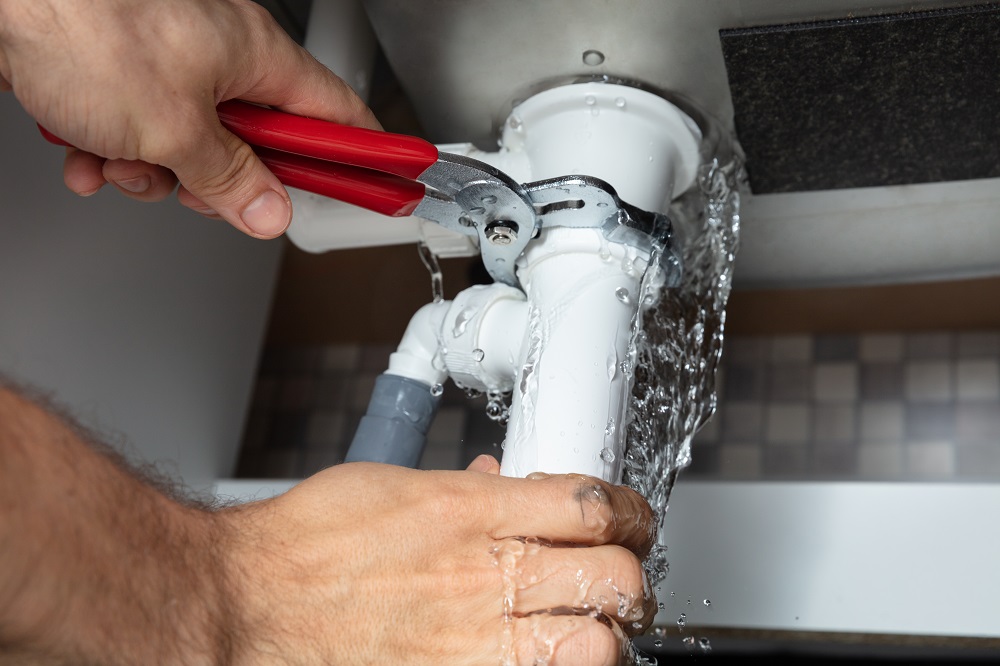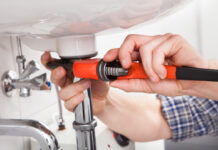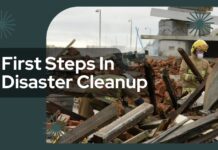Coming home to burst pipes is every homeowner’s nightmare. No matter how it happens, broken water pipes and the resulting water leaks are almost always a significant mess to clean up. In fact, they can be costly to fix, with pipe bursting repair costs ranging from USD$100 to USD$200 per foot, with most homeowners spending USD$400 to USD$1,500 total. Add the water damage repair and cleanup needed, and you can easily spend up to USD$2,000, depending on the extent. (1)
Do you know what you should do if one of your home’s pipes bursts? You may lessen the damage if you know how to act fast and what to do to deal with the broken pipe properly.
The truth is that besides calling a plumber and water damage cleaning companies such as Rescue Clean 911, there are many things that you can do that can help reduce water damage in your home. Read on to learn more.
Warning signs of broken water pipes
Burst pipes can sometimes show warning signs that severe damage is about to occur. That’s why you need to learn how to recognize those signs. If you notice them, taking action as quickly as possible can significantly limit the damage done.
Some of the common symptoms of a busted water pipe are as follows:
- Clanging noises behind walls
- Fluctuating water pressure
- Spiking water bill
- Water discoloration
- Strange water smell
- Small pools of liquid form under your sinks
Common causes of busted water pipes
Knowing the warning signs of broken water pipes isn’t enough. Preventing future water leaks also means understanding why busted pipes happen.
With that said, here are some of the reasons for broken water pipes at home:
- Aging pipes: Simple wear and tear could be the problem. The plumbing industry’s standard in the old days was galvanized iron or steel piping; as such, these pipes will begin to rust after several decades. The plaque will build up as a result. Water pressure issues will then follow, and ultimately, pipes will burst.
However, with routine inspection and maintenance, rusty pipes are a fairly obvious thing that homeowners who are paying attention can surely catch and address before they burst. - Clogging: From food, to hair, to oily/greasy substances—many foreign objects end up inside pipes and wreak havoc. The problem is that water pressure will keep on building if your pipes are clogged. It’s especially true when there’s an accumulation of hard water or water that’s exceptionally high in mineral content. Eventually, your pipes will burst once they can’t endure the pressure any longer.
Note that your home pipe system’s water pressure should generally be only between 30 and 80 psi. When water pressure gets higher than 80 psi, pipe bursts are very likely to occur. (2) - Extreme cold weather conditions: The leading cause of busted pipes, by far, are frozen pipes. That’s because the water in your pipes also starts to freeze when temperatures drop below 32 ℉ for a long time. The water also expands, placing so much pressure on the lines. The pipes could rupture as a result.
Note that aside from old, clogged, and frozen pipes, burst pipes can also be caused by improper plumbing system installation. Incorrectly fitted connections between the water pipes and poor soldering are improper installation practices that can change the water pressure in pipes. That’s why homeowners should also never skimp on hiring only trained professionals to repipe their homes or install new piping systems on their property.
How to reduce water damage if your pipe breaks
A pipe rupture is probably the last thing a homeowner wants to deal with. However, you might be especially vulnerable if you have an older home or once the temperature in your area drops. The fact that any pipe system can get busted leads us to our main topic—ways to reduce water damage in the face of a burst pipe.
With that in mind, here are some steps you can take before the plumber arrives:
1. Shut the water off
The first thing that you need to do is to turn the water off immediately. Doing so will prevent more water from flowing out. That’s why the sooner you can take this step, the better the chances of minimizing water damage are.
Homeowners can shut off the water in their pipe systems through their homes’ main water valve. And before you forget, always use a meter key or turn the valve clockwise.
Not sure where your water valve is located? Try looking for it in your crawlspace, near your water heater, or your basement.
2. Open your faucets
Don’t forget to open your faucets once the water has been turned off. That way, you can clear your pipes of any remaining cold water and relieve pressure in the pipe system.
Drain your pipes of cold water first, then run hot water in all sink faucets so that your lines are empty of any excess water.
3. Turn off your electricity
Depending on the size and location of the leak, homeowners may also need to turn off their power supply to prevent leaking water from getting into contact with the fuse box or any electrical sockets. Disconnecting your electrical panel is especially essential in the part of your home where there’s visible water damage already. If water blocks the path to the breaker box, it’s best to call an electrician.
4. Locate the broken area in the pipe system
The next step is to find the break in your pipes. That way, you can inspect the extent of the damage and orient the professionals you’ll be calling for help about it the moment they reach your house. Place a bucket underneath the burst pipe to catch dripper water if you see it early enough.
5. Document everything
Anything that needs repairs must be documented. Do it before calling for professional help. That way, you can have photos or notes about the damage to present to the plumber and electrician you’ve hired once they arrive. By documenting everything, you can rest assured that all problems that resulted from the burst pipe can be addressed.
6. Call in a professional to handle repairs and cleanups
After ensuring that the pipes are already empty of excess water and the water and electricity are already shut off, call in the experts. Hire a plumber to replace or fix damaged pipes, bring in a reliable electrician to deal with electrical system damage, and reach out to cleaning experts for cleaning up the damage.
Is it really necessary to ask for professional assistance when your pipes burst? You might be wondering. The answer is yes it is. An experienced plumber or electrician will make reliable repairs, preventing further damage. You can also check out this video to learn why hiring a professional water damage restoration company is a good idea:
7. Secure the pipe using a temporary patch
Creating a temporary fix is also an essential step to take, especially if you have to wait for a few hours for a plumber to arrive. The good news is that there are several ways that you can try to reinforce your pipe. Depending on the size of the hole, you can use either electrical tape, epoxy putty, or a sleeve clamp.
8. Thaw pipes by letting warm air into the broken area
Finally, heat the pipes by opening cabinets and pantry doors. That way, warmer air can circulate your pipes. Blowing heat into cold areas using a hairdryer is also a good idea. Heating the pipes prevents water from freezing, allowing it to flow through instead.
Final Thoughts
When a pipe gets busted and water starts gushing out, every second counts. That’s why it’s essential to know what to do about it. Hopefully, what you’ve learned here can help you act fast to successfully reduce the damage to burst pipes and avoid costly repairs, by contacting the best California leak detection company.
References:
- “How Much Are Average Plumbing Estimates?”, Source: https://homeguide.com/costs/average-plumbing-estimates
- “Water Pressure Safety: Why Having The Right PSI Matters”, Source: https://www.nationwideprivateclient.com/articles/loss-prevention-tips/water-pressure-safety-why-having-the-right-psi-matters



















